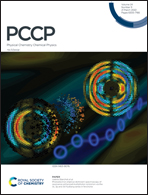Understanding the wetting discrepancy in calcium alumino silicate hydrate induced by Al/Si ratio
Abstract
The application of supplementary cementitious materials (SCMs) in concrete can improve its durability in the marine environment. Calcium alumino silicate hydrate (CASH) is the main hydration product of SCMs; however, to date, the mechanism of the wetting discrepancy in CASH with different Al/Si ratios has not been revealed at the molecular scale. Herein, the molecular dynamics simulation method was used to study the wettability of water nanodroplets on the surface of CASH substrates with different Al/Si ratios, aiming to reveal the influence of CASH gel with different Al contents on the wettability of water molecules. The simulation results suggested that the CASH interface with a high Al/Si ratio has better wettability for nanodroplets. The microcosmic analysis showed that the interaction between particles and the CASH substrate is affected by the Al content. The electronegativity of the CASH substrate increases due to the substitution of Al–O tetrahedrons, which makes it stronger to solidify Ca ions on its surface and easier to form hydrogen bonds with water molecules in a nanodroplet. The orientation distribution of water molecules further revealed the source of the force of the CASH substrate on nanodroplets at the atomic level. The analysis of the dynamic properties showed that the H-bonds between CASH substrate with a high Al/Si ratio and water molecules are more stable, and thus the nanodroplets have better stability on the surface of CASH.



 Please wait while we load your content...
Please wait while we load your content...